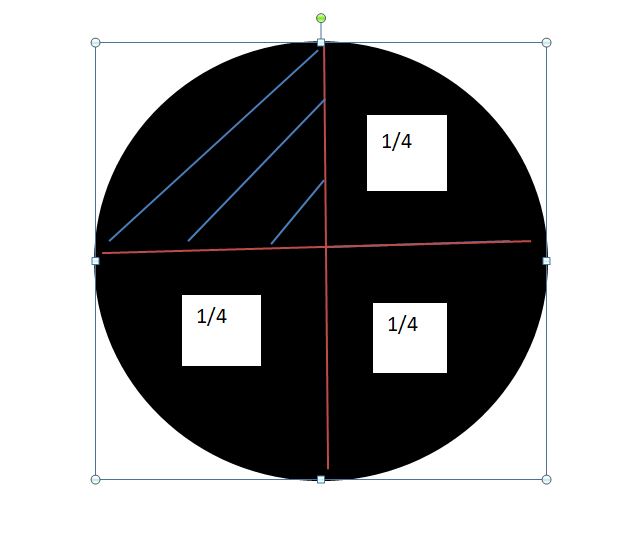Suppose you're given to fractions. Let us assume that those fraction numbers are 1/4 and 1/4. Now you may wonder how do I add them? It is simple.
When we talk about fractional numbers with the same denominator, you could just add the numerator. The denominator will be the same. We don't have to use the LCM method to make the denominators the same.
The generalized form of addition:
The generalised form on addition of fractional numbers are as follows:
a/b+c/b = {(a+c)/b}
Example:
For example: ¼+¼ = {(1+1)/4} = 2/4.
The addition of fractional numbers can be represented by a diagram in the following way:
The answer can be further simplified in the following manner. 2/4 = ½.
Word problem example:
Q1. Convert cents to dollars. 1 dollar is 100 cents. So 25 cents correspond to how many dollars?
Ans) The answer is 25/100 dollars.
Q2. Suppose you are given 10 cents and 25 cents. How much do they correspond in dollars when added together?
Ans) You need to add 10 cents and 25 cents in terms of dollars. Hence, the answer becomes 10/100 + 25/100 = {(10+25)/100}= 35/100
Adding three fractional numbers
The addition of three fractional numbers is no different than the addition of two fractional numbers. This is true when the denominator of the three fractional numbers is the same.
Let us take an example:
¼ + ¼ + ¼ = {(1+1+1)/4} = ¾.
Let us understand the same with the help of a diagram:

Addition of multiple fractional numbers:
The addition of multiple fractional numbers is no different than the addition of two or three fractional numbers. This is true when the denominator of the multiple fractional numbers is the same.
For example:
¼ + ¼ + ¼ + ¼ +¼ + ……. = {(1+1+1+1+1+ …..)/4}
Subtraction of two fractional numbers:
When we talk about fractional numbers with the same denominator, you could just subtract the numerator numbers. The denominator will be the same. We don't have to use the LCM method to make the denominators the same.
To elaborate, suppose we have two numbers 5/4 and 2/4 as the fractional numbers. You would subtract the fractional numbers in the following way:
5/4 - 2/4 = {(5-2)/4} = ¾.
The generalized form of subtraction:
The generalised form on subtraction of fractional numbers are as follows:
a/b - c/b = (a - c)/b
You must have noticed that the generalized form of the addition and subtraction of the fractional numbers are identical. That is, you can carry out the subtraction of the numerators and if the denominator is the same. This is valid when the denominator of the two fractional numbers is the same.
Subtraction of three fractional numbers
The subtraction of three fractional numbers is no different than the addition of two fractional numbers. This is true when the denominator of the three fractional numbers is the same.
Let us take an example. Suppose if we have three fractional numbers. Let them be 8/4, 3/4, and 1/4.
In such a case, the subtraction would be:
8/4- 3/4- 1/4. = {(8-3-1)/4} = 4/4 = 1.
Subtraction of multiple fractional numbers:
The subtraction of multiple fractional numbers is no different than the subtraction of three fractional numbers. This is true when the denominator of the multiple fractional numbers is the same.
8/4- 3/4-2/4 - ¼ - ….. = {(8-3-2-1 -....)/4}

